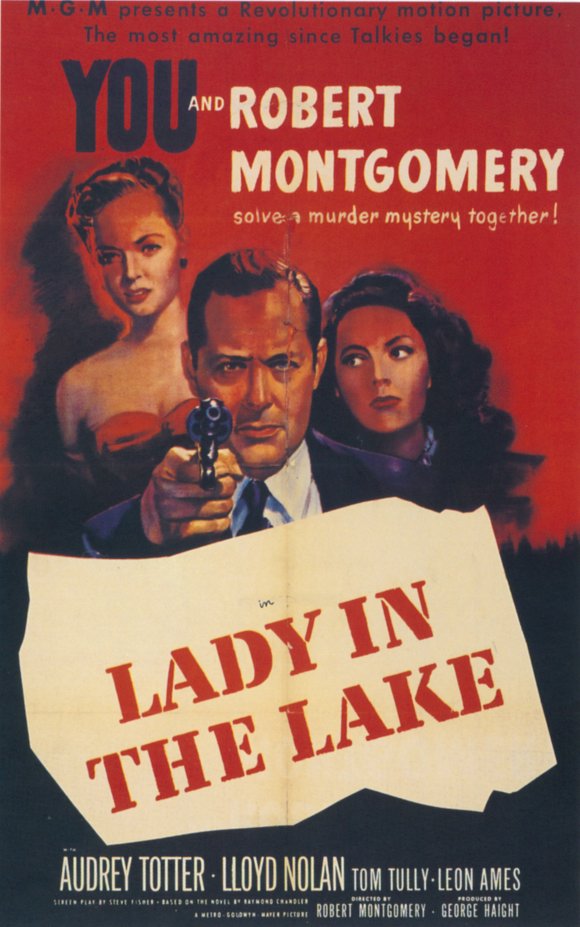This is still my favorite Universal Opening – The Burbs (1989):
A Brief History of Universals Founding
In 1906 Carl Laemmle started one of the first motion picture studios, aka nickelodeons in Chicago. In 1908, Thomas Edison’s film company backed the “Motion Picture Trust” with the intent to monopolize the film industry. Laemmle and his fellow nickelodeon entrepreneurs weren’t having it and started the Independent Moving Pictures Company (IMP). IMP was credited with creating the “star system” by signing stars like Mary Pickford to exclusive contracts.
In 1912 Universal Studios was founded in New York City by Carl Laemmle, David Horsley, Charles O. Baumann, Mark Dintenfass, Pat Powers, Adam Kessel, William Swanson, Robert H. Cochrane, and Jules Brulatour. But for all intents and purposes Carl Laemmle was the head honcho and is credited with founding the studio. He emerged as President of the group and then bought everyone else out not long after. In 1915 Laemmle bought a tract of land in the San Fernando Valley that is now known as Universal City.
Early on, Universal was a second tier studio, with less money to play with than the bigger studios like MGM, Warner Brothers, and Paramount. Because of this, they could not have extravagant sets, color, or song and dance numbers. They found their lane in the horror film, reusing old sets to save on costs and adapting existing stories from the public domain.
I should add that German Expressionism was a precursor to Universal’s Monster Movies. The Cabinet of Dr. Caligari and Nosferatu being the most famous. We talked about them a bit in a previous article here.
Also, Universal wasn’t the only production company putting out great horror films. RKO made King Kong (1933) and MGM put out Freaks (1932) which was controversial at the time but became a cult classic 30 years later.
The Silent Era
Universal, like today wasn’t entirely a horror picture studio. But when they signed Lon Chaney on board they caught lightning in a bottle with The Hunchback of Notre Dame. It was Universal’s highest grossing silent film.
With all of these being in the public domain I’m able to put all the clips on here with no issues. If you’re into old movies take a look at Lon Chaney’s performances, he was pretty great.
The Hunchback of Notre Dame (1923)
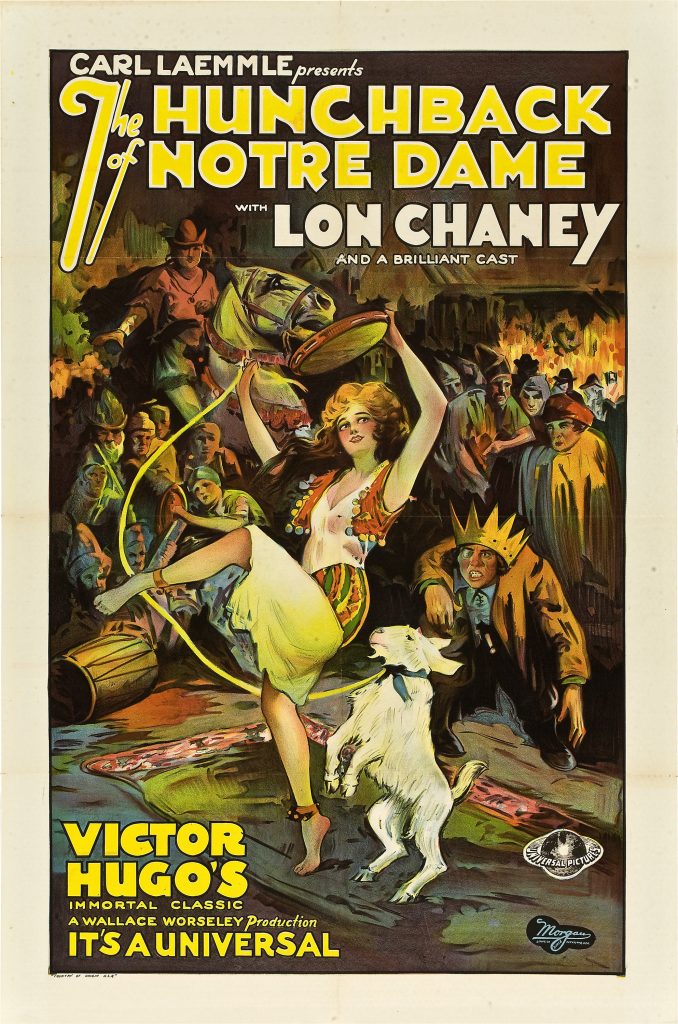
Based on Victor Hugo’s novel of the same name, Lon Chaney had wanted to do this movie for years before signing on with Universal. He even signed on with a German production company to make the movie abroad. That production fizzled out and Laemmle’s right hand man, Irving Thalberg convinced Laemmle to fund it instead.
The Phantom of the Opera (1925)
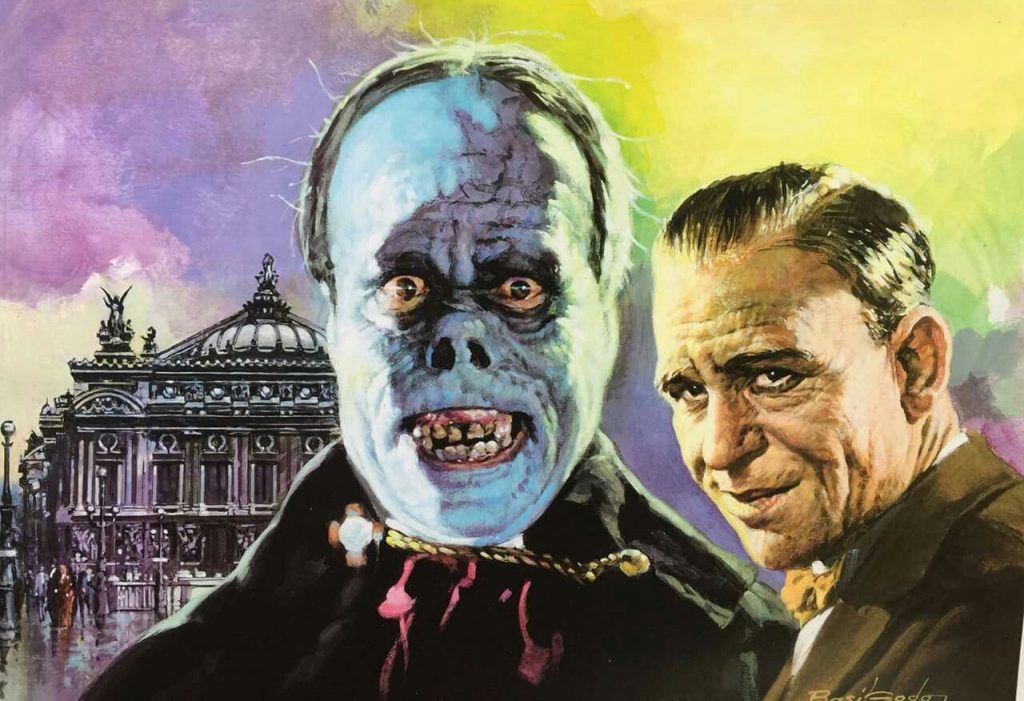
This painting by Basil Gogos has Lon Chaney as The Phantom alongside Lon Chaney in street clothes in front of Palais Garnier, the opera house The Phantom haunts in the story.
Another movie starring Lon Chaney and adapted from a French novel, The Phantom of the Opera is based on Gaston Leroux’s novel of the same name. Lon Chaney did the make-up himself. They kept his look a studio secret until the film’s premiere, which is why you don’t see it in the movie poster.
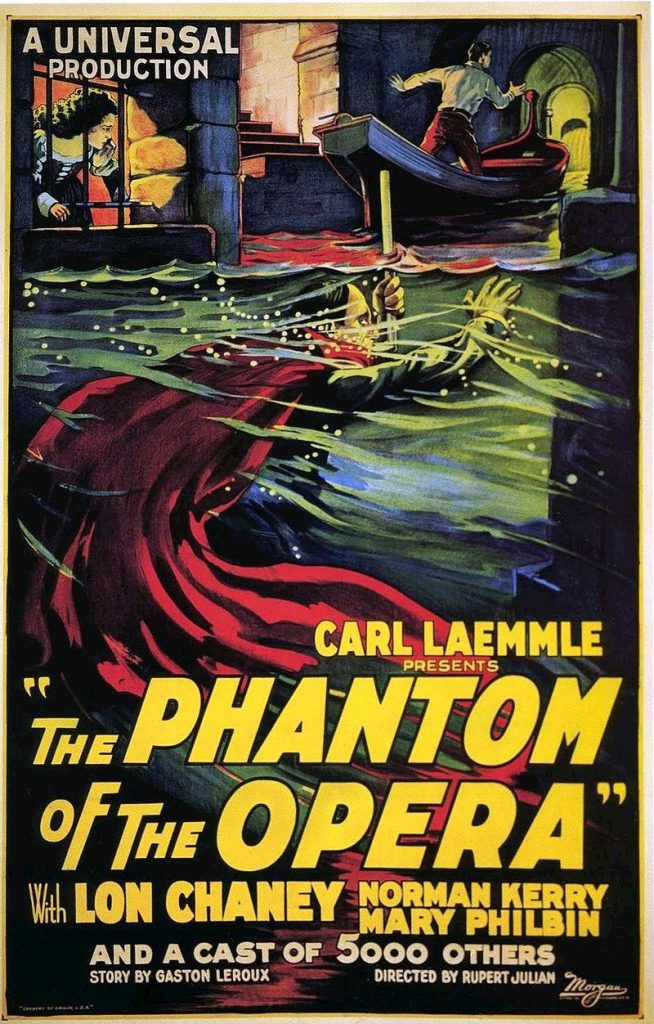
The Cat and the Canary (1927)
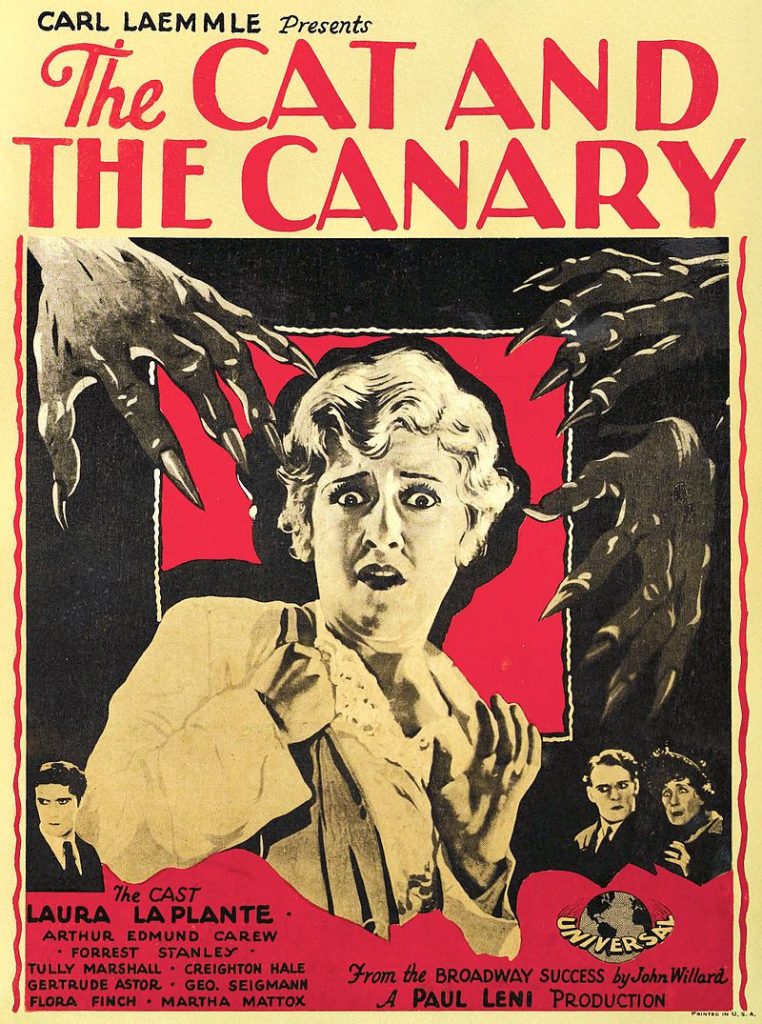
The Cat and the Canary is a comedic horror film where Annabelle West, played by Laura La Plante, inherits her uncle’s fortune. Annabelle and her family spend the night in his haunted mansion. Meanwhile, a guy known as “the Cat” escapes from a lunatic asylum and hides in said haunted mansion.
The Man Who Laughs (1928)
OK, I couldn’t find an English text version of this movie in its entirety. But the trailer gives you an idea.
The Man Who Laughs is based on a novel of the same name by Victor Hugo. I have a feeling we may have to write about Victor Hugo in a future article, even though he wasn’t a pulp writer he was very influential on pop culture today. But I digress.
The story takes place in 1680s England, during the rain of King James II. The King sentences his political enemy, Lord Clancharlie, to death via the iron maiden. Gwynplaine, Clancharlie’s son, is given a permanent grin, so that he will “laugh forever at his fool of a father”.
Gwynplaine is later deserted by his “caretakers.” He discovers a blind baby girl named Dea who is orphaned. Years later, Gwynplaine is now the Laughing Man at a freak show. He falls in love with Dea who is blind (thank God that face is freaky). So freaky in fact, it was a huge influence on the creation of The Joker.
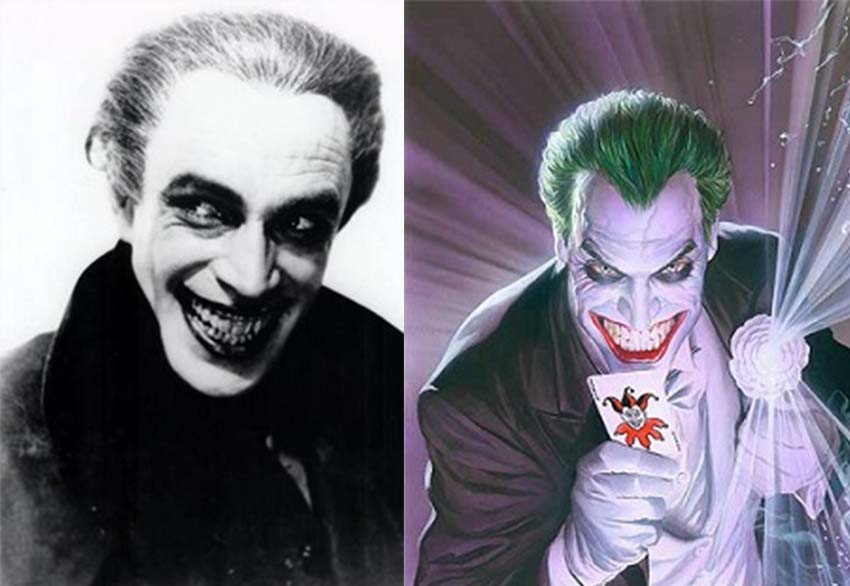
The Classic Era
I’m going to lump the ’30’s right up to the 50’s into one “Classic Era” because this is when the most famous versions of the Universal Monster Movies were produced. Especially in the 30s and the 40s, but the 50s has it’s share of famous monster movies.
Now, when I say “Classic Era” I’m not saying all of these are classics. From the 1940s onward Universal put out some pretty cheesedick horror movies. That said, I’m sometimes in the mood for a good, bad movie so I’m not gonna hate.
Dracula (1931)
In 1922 F. W. Murnau’s Nosferatu was made after Bram Stoker’s Estate had refused permission. In Nosferatu Count Dracula became Count Orlok and they changed the story around. Laemmle bought the rights to film an authorized adaptation of the book, but he also studied Murnau’s work for inspiration.
If someone was to tell you to imagine Count Dracula, chances are you’re envisioning Bela Lugosi’s version of the character over any other. No shade on Christopher Lee’s Dracula or Gary Oldman’s or even William Marshall’s Blacula. Bela just did it first and so spot on you’re playing catch up if you take on the Count Dracula role.
Frankenstein (1931)
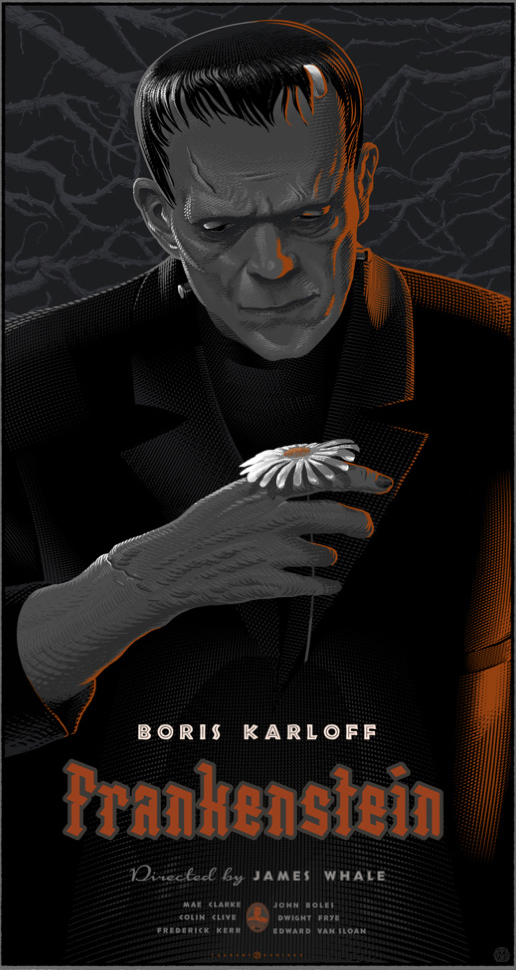
Can you imagine being of goth tendencies and living through the year 1931 with Dracula AND Frankenstein coming out? What a year for horror movie fans.
Based (loosely) on Mary Shelley’s novel of the same name, Frankenstein is still a great movie. Like Lugosi’s Dracula, when you think Frankenstein you think Boris Karloff’s Frankenstein.
Murders in the Rue Morgue (1932)
Based on Edgar Allan Poe’s short story of the same name, Murders in the Rue Morgue is a story that is credited with starting the detective novel, we previously talked about that in this article. Like Stephen King, people think Poe = Horror. Not so much.
He is credited not only with creating the detective genre but also believed to have published the first science fiction story, Hans Phaal (1835) But, it’s because he was considered a horror writer that this movie was created into to horror movie and not a police procedural.
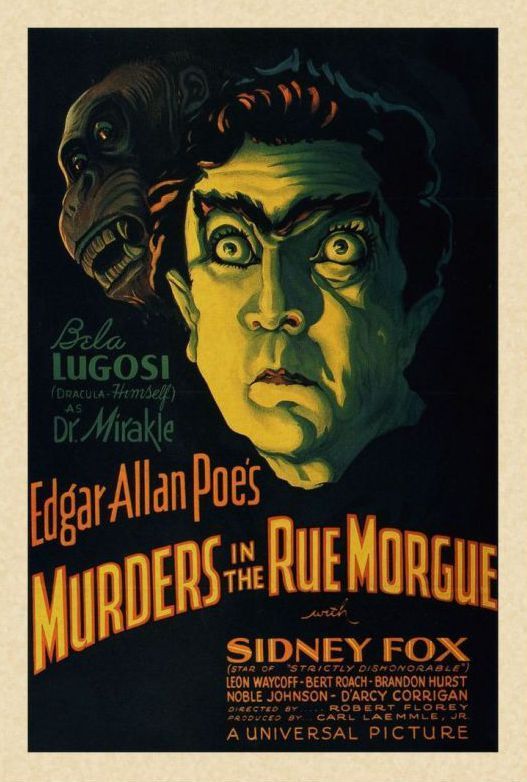
The Mummy (1932)

Boris Karloff came back with another banger the year after Frankenstein came out. Karloff plays an ancient Egyptian mummy named Imhotep who, after being discovered by archeologists is brought back to life through a magic scroll.
It’s worth noting that this movie came out 10 years after the discovery of King Tut, making this far more contemporary than it would be to modern viewers.
The Invisible Man (1933)
Based on the science fiction novel The Invisible Man by H. G. Wells, and directed by James Whale The Invisible Man was considered a “nearly perfect translation of the spirit of the book.”
Fun fact, Gloria Stewart aka the old lady in Titanic, she play’s the invisible man’s fiancée.
The Black Cat (1934)
Based on an Edgar Allan Poe short story that I read recently and I’ve gotta say, not that scary. But hey back in the early to mid-1800s I’m sure it was spooky as hell. The movie is not really at all like the story.
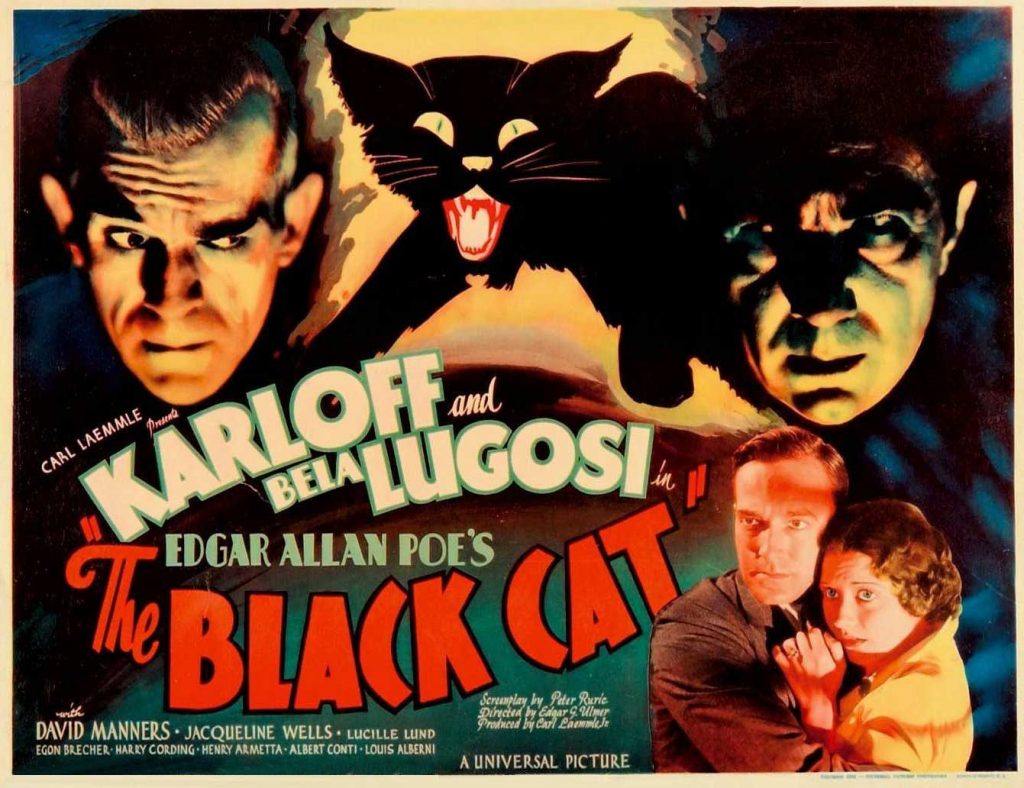
The Black Cat is the first of eight films where horror icons Bela Lugosi and Boris Karloff shared the screen.
Bride of Frankenstein (1935)
Like Frankenstein, Bride of Frankenstein was directed by James Whale and took the plot from the original novel by Mary Shelley.
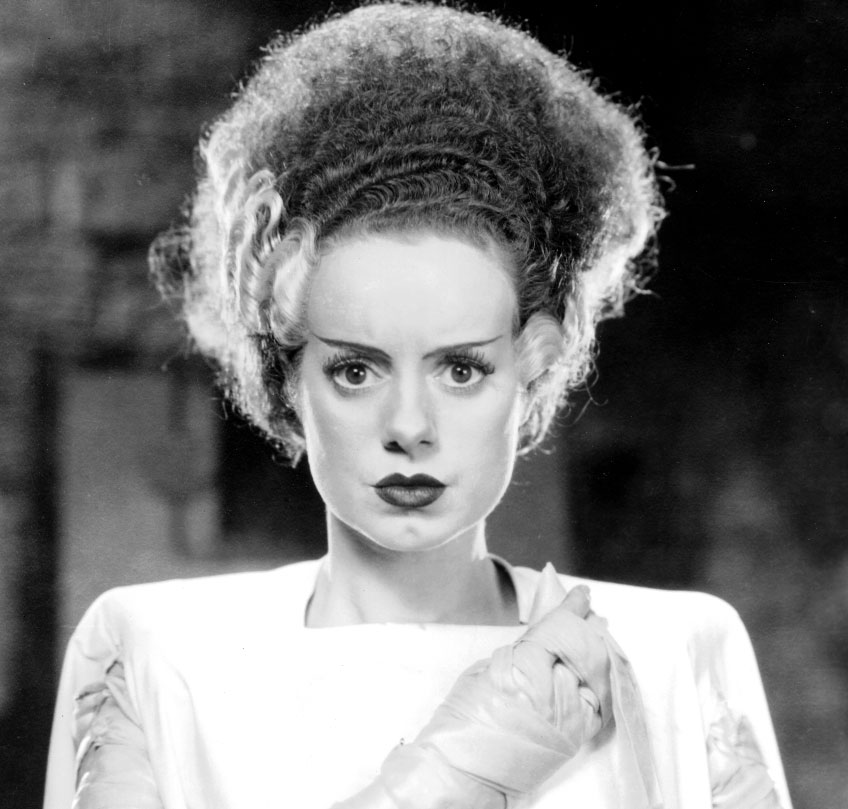
I actually enjoyed this more than Frankenstein, it’s got a fun ending and there’s this scene where Frank makes a friend.
Werewolf of London (1935)
I only added this movie so I could post this:
The Wolf Man (below) starring Lon Chaney Jr is more of a classic than this one. It is however, the first mainstream Hollywood film to feature a werewolf so that’s cool.
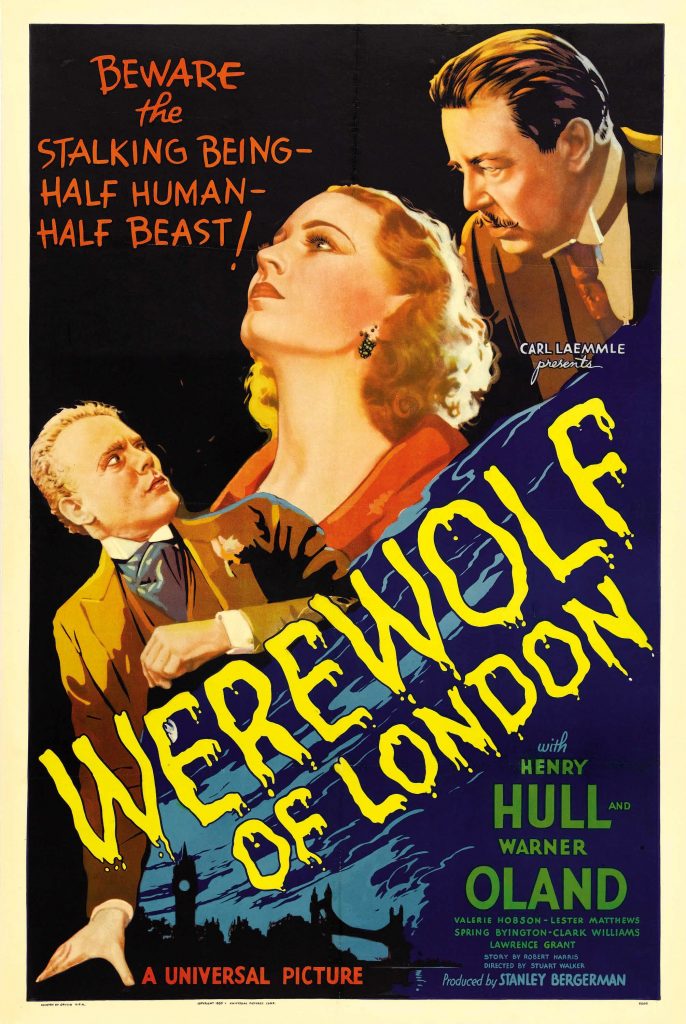
Werewolves of London again” – Warren Zevon
The Phantom Creeps (1939)
Innovative for it’s time, this sci-fi / horror film is in the public domain so you can find it in it’s entirety on YouTube.
The movie is about Dr. Zorka (played by Bela Lugosi), a rogue scientist, who creates giant robots and invisibility belts. Naturally, foreign spies would like to get their hands on some giant killer robots and invisibility belts so the US Government asks for him to give them the prototypes, Zorka refuses. The government moves in and Zorka’s wife dies in the process which is kind of what happened at Ruby Ridge. Zorka then swears vengeance, which is what Timothy McVeigh did after Ruby Ridge.
The Phantom Creeps features a scrolling text synopsis that served as inspiration of Star Wars opening crawl.
The Wolf Man (1941)

Lon Chaney Jr stars in the origin tale of the role he would play for four sequels. He is bitten by none other than a Gypsy Bela Lugosi and becomes a werewolf when visiting his estranged father in Wales. In his father’s town the townsfolk recite this rhyme whenever werewolves are mentioned.
Even a man who is pure in heart, and says his prayers by night;
May become a wolf when the wolfbane blooms and the autumn moon is bright
It Came from Outer Space (1953)
Written by horror and sci-fi pulp writer Ray Bradbury, It Came from Outer Space tells the story of an astronomer and his fiancée witnessing a UFO crash in the desert. This came out six years after the alleged Roswell UFO Incident.
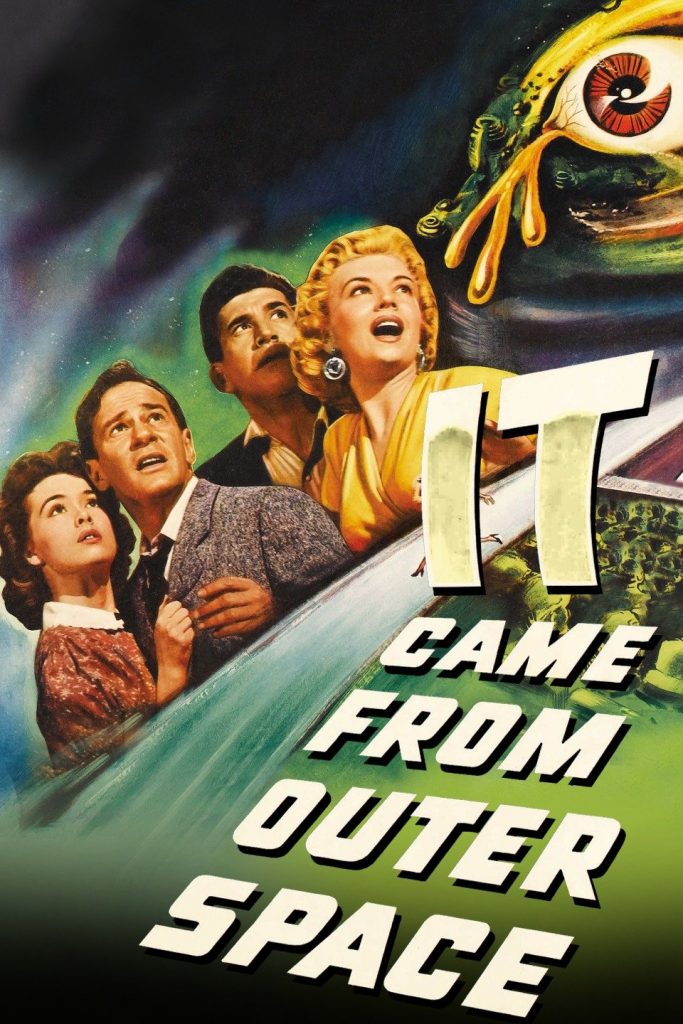
Creature from the Black Lagoon (1954)

An excavation in the Amazon goes awry when they cross paths with the Gill-man (not “The Creature”). The story is honestly King Kong with a mutant frog. That doesn’t make it any less awesome but to describe the story is to describe King Kong.
This Island Earth (1955)
Praised by critics at the time because of its groundbreaking SFX, it was later lampooned on Mystery Science Theater 3000. With the Space Race in full swing and everyone thinking we’ll have flying cars and Mr. Fusions by 2015, the Sci-Fi / Horror movie was super popular during this time.
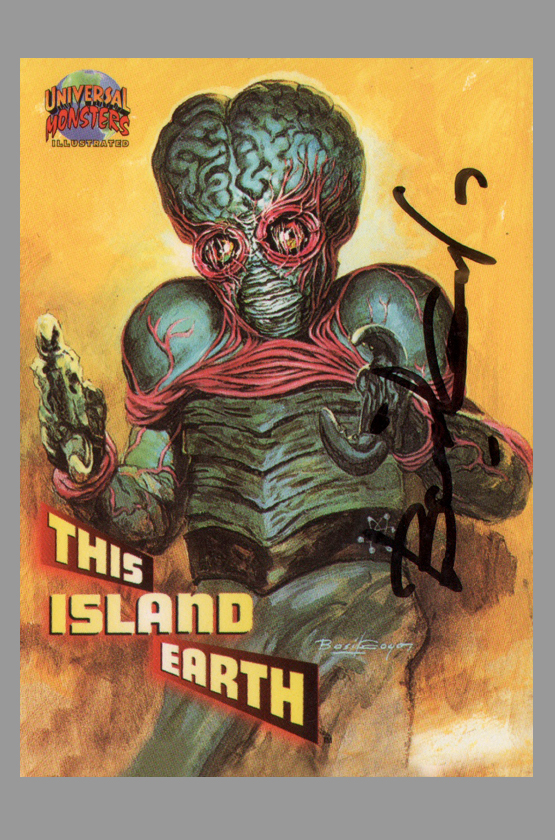
Based on a novel by Raymond F. Jones that was featured in the sci-fi pulp magazine, Thrilling Wonder Stories. In 1982 Spielberg paid homage to this film by having E.T. turn on the TV and watch a clip of This Island Earth.
The Dark Universe
OK, all of the Universal horror movies have been re-made. Some better than others. And I totally understand where Universal is coming from, there’s a boatload of money to be had if you follow the Marvel strategy. Universal tried to do that with the “Dark Universe” reboots.
There’s a few snags they have had getting this off the ground.
1.) They were too pre-occupied with setting up these movies as part of the Universe and a precursor to the “Dark Army” than making solid films. Movies first. Rollercoaster rides second. Don’t get ahead of yourselves.
2.) Not all movies, especially not all remakes have to be “dark” or “gritty.” Christopher Nolan’s Batman was awesome but do we need everything to be “gritty?”
When Fritz takes the “bad brain” and the result is Frankenstein, that’s awesome. I’m cool with these movies being a little campy. There’s The Conjuring and then there’s The Mummy. They’re both great in their own right but I’ll take Brendan Fraser’s family friendly version over a gritty mummy any day. Just like I don’t want a campy Conjuring.
I really hope the re-boots do well because I personally love Universal, I respect the hell out of their movies and they seem much more well run than some of the other studios out there. I’m excited to see The Bride of Frankenstein get remade with (possibly) Gal Godot in the titular role, she’s got big shoes to fill I’m a huge Elsa Lanchester fan.
But, you already have your Dark Army and you have the perfect crew to combat them:




